Are you curious about the latest trends in the fitness industry and how they can impact your business? Look no further! We've done the research for you and gathered the most relevant fitness industry statistics to help you stay ahead of the game.
Get ready to discover surprising insights, and learn how they can be applied to your business strategy. Read on to get data insights on how to make the right changes and adaptations that will take your business to the next level.
- The state of the fitness industry: Revenue and number of gyms
- Get to know your members: Member stats and member retention rates
- Fitness industry statistics on quitting: Understanding gym member cancellations
- Understanding your target audience: Demographics and behaviour of your members
- Why they join the gym: Top member motivations
- What matters most to gym-goers: Key factors of member satisfaction
- When and how gym-goers exercise: Trends and habits
- The future of fitness is digital: Stats for online, digital and virtual fitness
- Maximising the benefits of fitness industry statistics for your business
The state of the fitness industry: Revenue and number of gyms
- The fitness industry is expected to generate $216 billion in revenue in 2023, according to industry estimates (source).
- It is predicted that the fitness industry will increase its revenue by 172% from 2021 to 2028 – reaching $435 billion (source).
- The COVID-19 pandemic led to a sharp decline in the fitness industry's revenue in 2020, with a decrease of 45% (source).
- Despite the pandemic, the fitness industry rebounded by the end of 2021, with an increase of 55% in revenue compared to pre-pandemic levels (source).
- While the industry as a whole had recovered, gyms and health centres ended 2021 5% below their 2019 revenue peak (source).
- In contrast, the online fitness industry saw a significant boost, with a 32% increase in revenue compared to pre-pandemic levels by the end of 2021 (source).
- Only looking at health clubs, the fitness industry includes 200,000 clubs (source).
- Europe is home to over 30% of the world's health and fitness clubs (source).
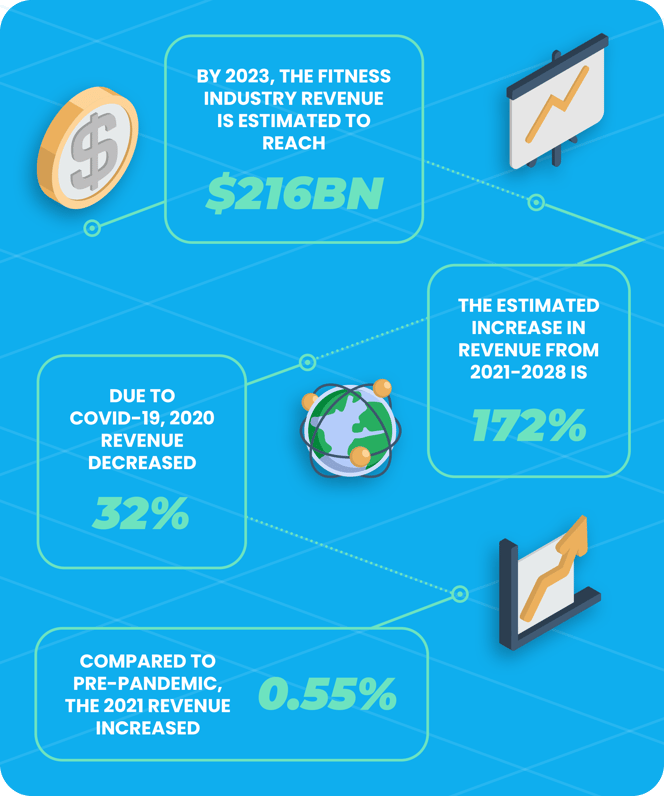
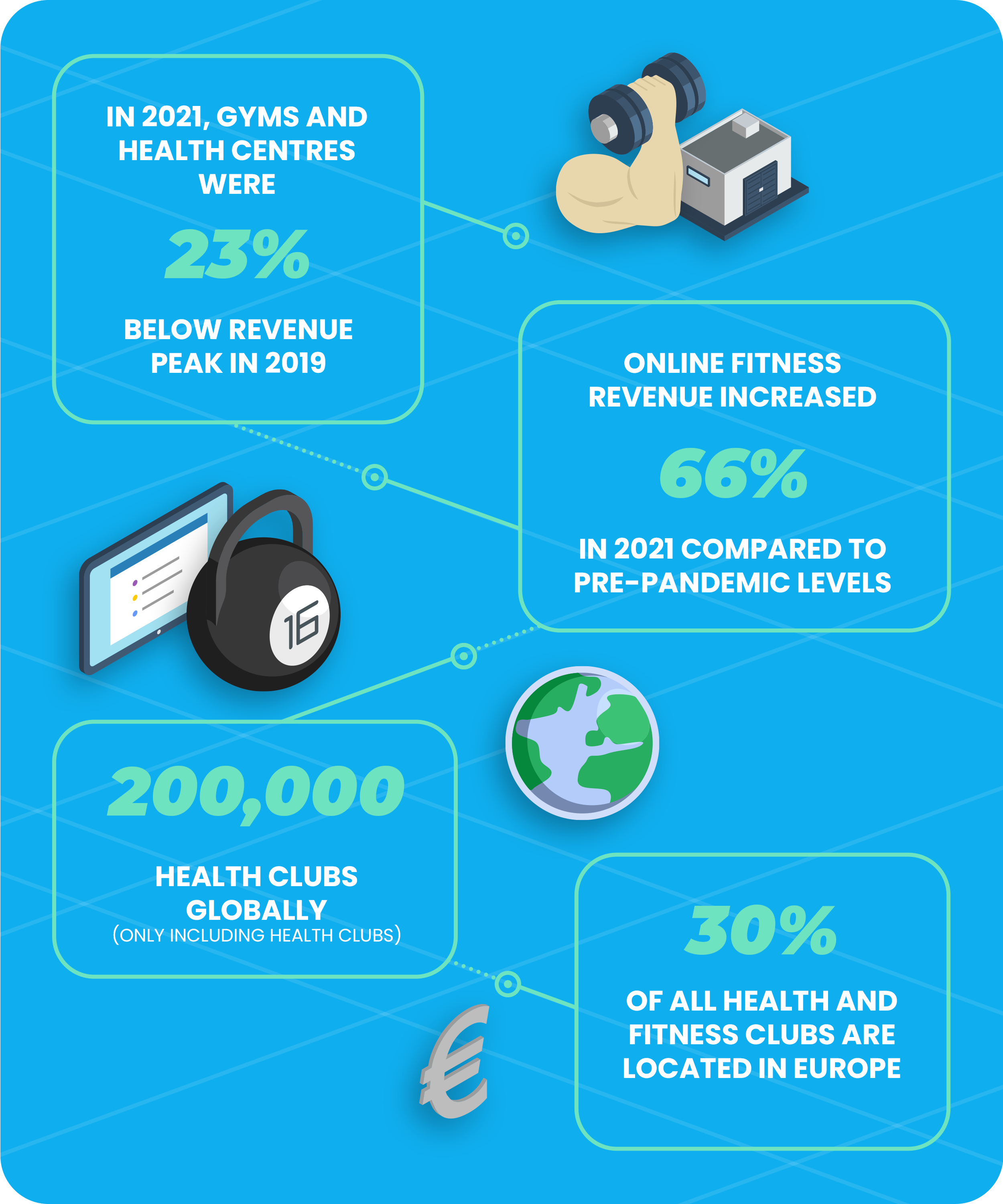
Get to know your members: Member stats and member retention rates
- The fitness industry currently serves 184 million members through health clubs (source).
- The fitness industry as a whole is expected to serve 230 million members by 2030 (source).
- A gym member is valuable, with an average worth of $517 per year (source).
- The average retention rate for traditional health clubs is 4% (source).
- Fitness studios make the cut of outrunning health clubs with an average retention rate of 89% (source).
- Group exercise studios have an average retention rate of 73%. (source).
- If you specialise in personal training, you're in luck – the average retention rate for these studios is a solid 80% (source).
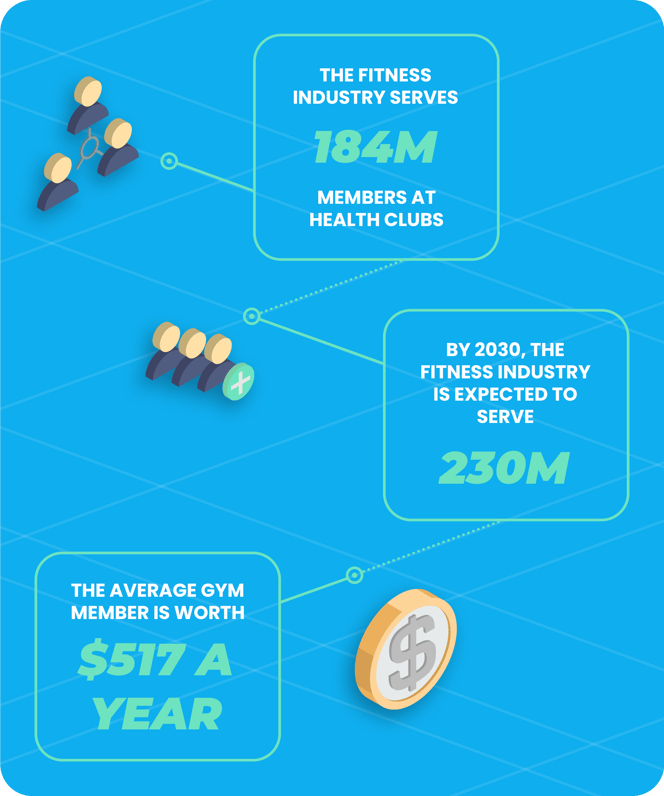
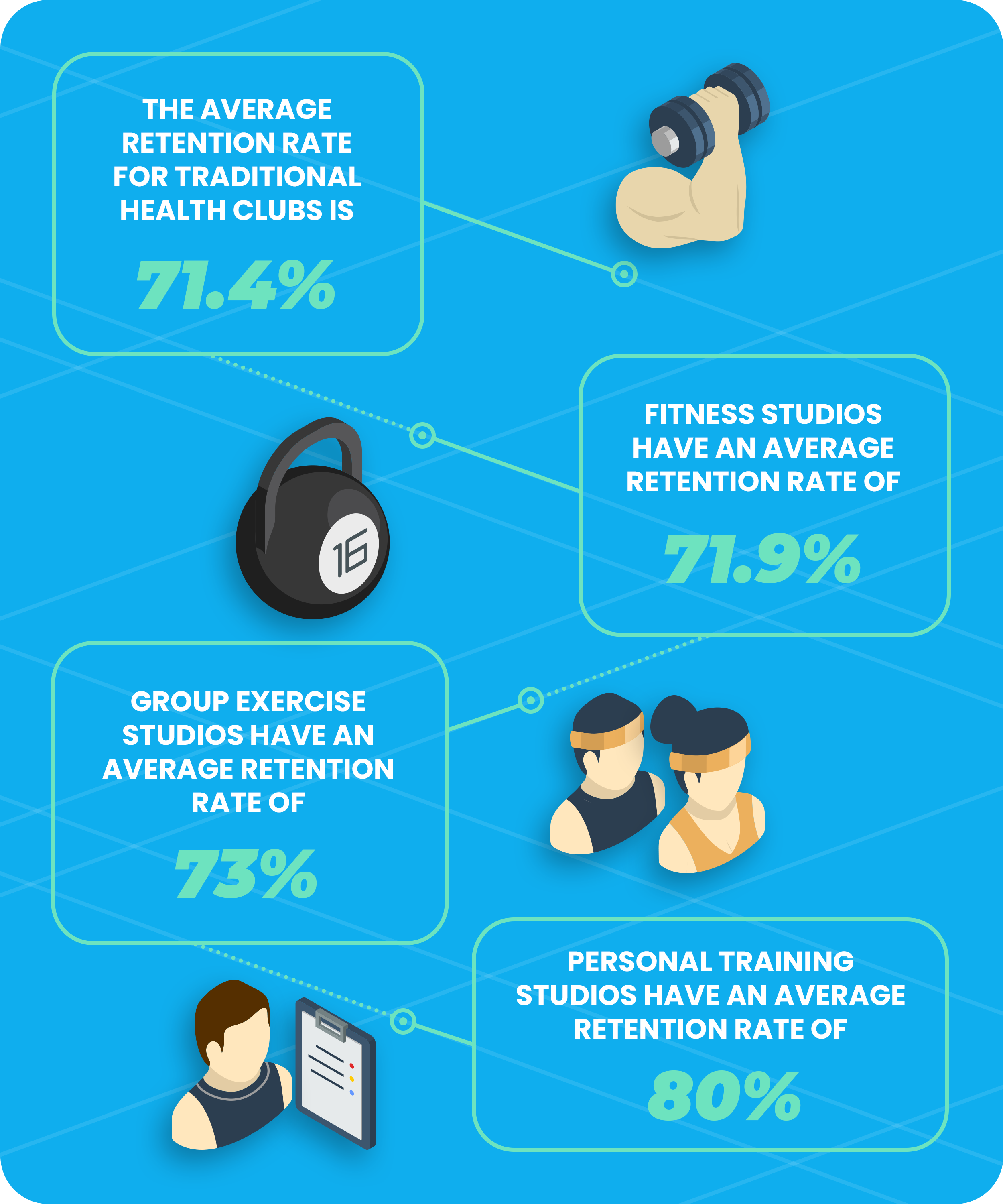
Fitness industry statistics on quitting: Understanding gym member cancellations
- It's a common phenomenon in the fitness industry that 50% of all new gym members cancel their membership within the first 6 months (source).
- The numbers show that 8% of male gym members cancel their membership after a year (source).
- In comparison, 16% of female gym members cancel their membership after a year (source).
- However, staff interactions with members can make a big difference, reducing the risk of cancellation by up to 33% with just 2 interactions a month (source).
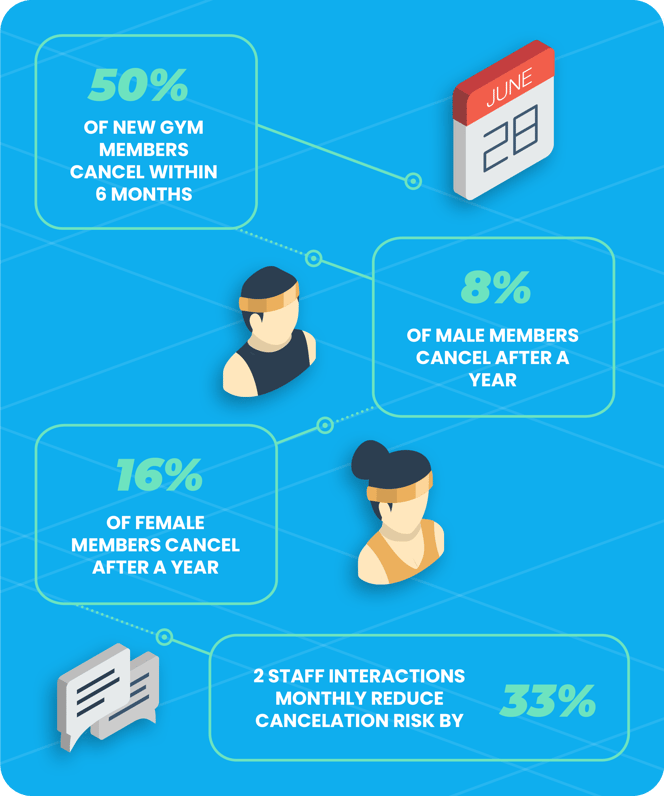
Understanding your target audience: Demographics and behaviour of your members
- On average, 24% of men and 6% of women participate in sports and physical exercise (source).
- When it comes to gym memberships:
- Millennials lead in overall exercise participation with 81% (source).
- In comparison, 61% of Boomers (source).
- Millennials outrun all other age groups when it comes to using fitness apps (source).
- Female millennials use fitness apps twice as much as male millennials (source).
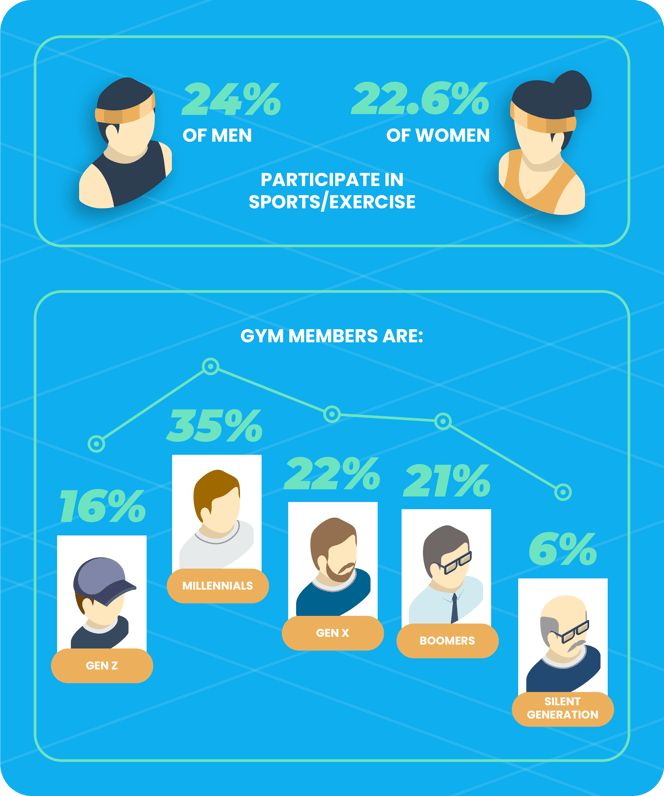
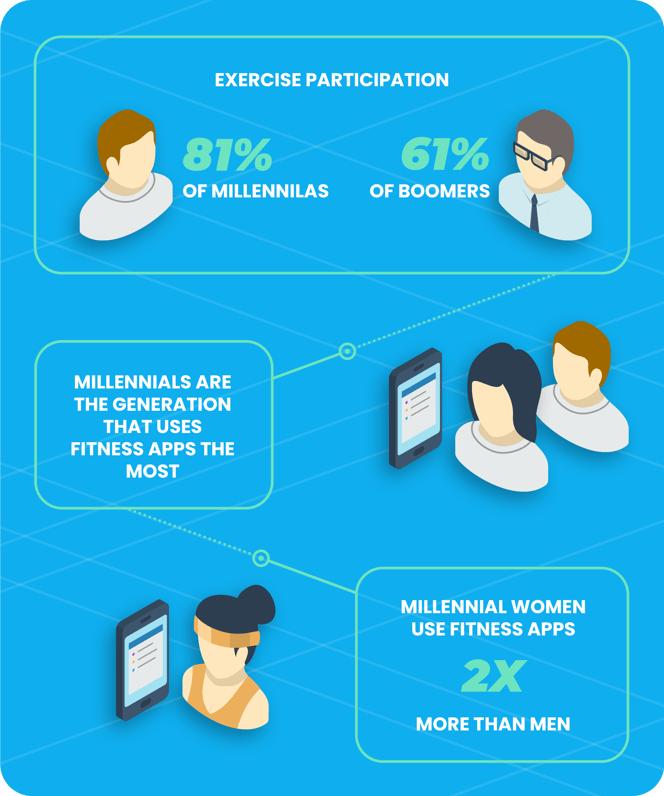
Why they join the gym: Top member motivations
- Get fit: 44% of members join to become fit and toned (source).
- Healthy lifestyle: 42% aim to maintain a healthy and active lifestyle (source).
- Build muscle: 34% want to build up their muscle (source).
- Weight loss: 33% join to lose weight (source).
- Appearance: 32% want to look good (source).
- Fun: 31% join for fun (source).
- Social interaction: 28% want to meet new people (source).
- Stress relief: 28% seek stress relief and mental well-being (source).
- Excitement: 25% go to have an exciting experience (source).
- Family time: 18% want to spend time with family and friends (source).
- Adrenaline rush: 16% seek an adrenaline rush (source).
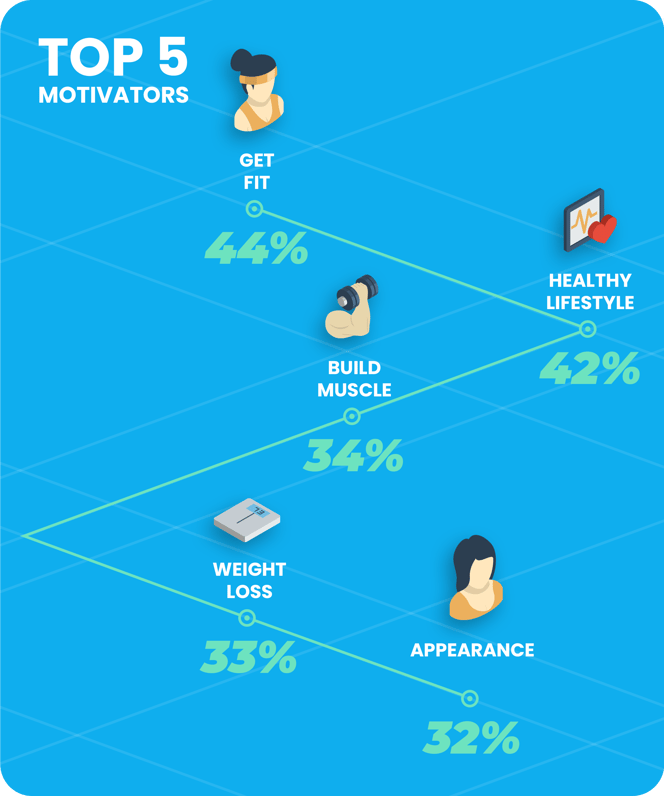
What matters most to gym-goers: Key factors of member satisfaction
- Location and cost tie for first place, with 37% of members ranking each as crucial (source).
- Equipment and facilities are close behind, named as important by 35% of members (source).
- Opening hours are also a top concern, with 31% of members considering it key (source).
- The quality of staff is noted as significant by 26% of members (source).
- Atmosphere and design also play a role, with 25% of members valuing them (source).
- Drink and snack options are important to 21% of members (source).
- Wellness amenities, such as saunas, wellness and other service offers, rank as key for 20% of members (source).
- Classes and courses offered are deemed important by 18% of members (source).
- Images and branding are considered crucial by 17% of members (source).
- Feeling a sense of community is valued by 17% of members (source).
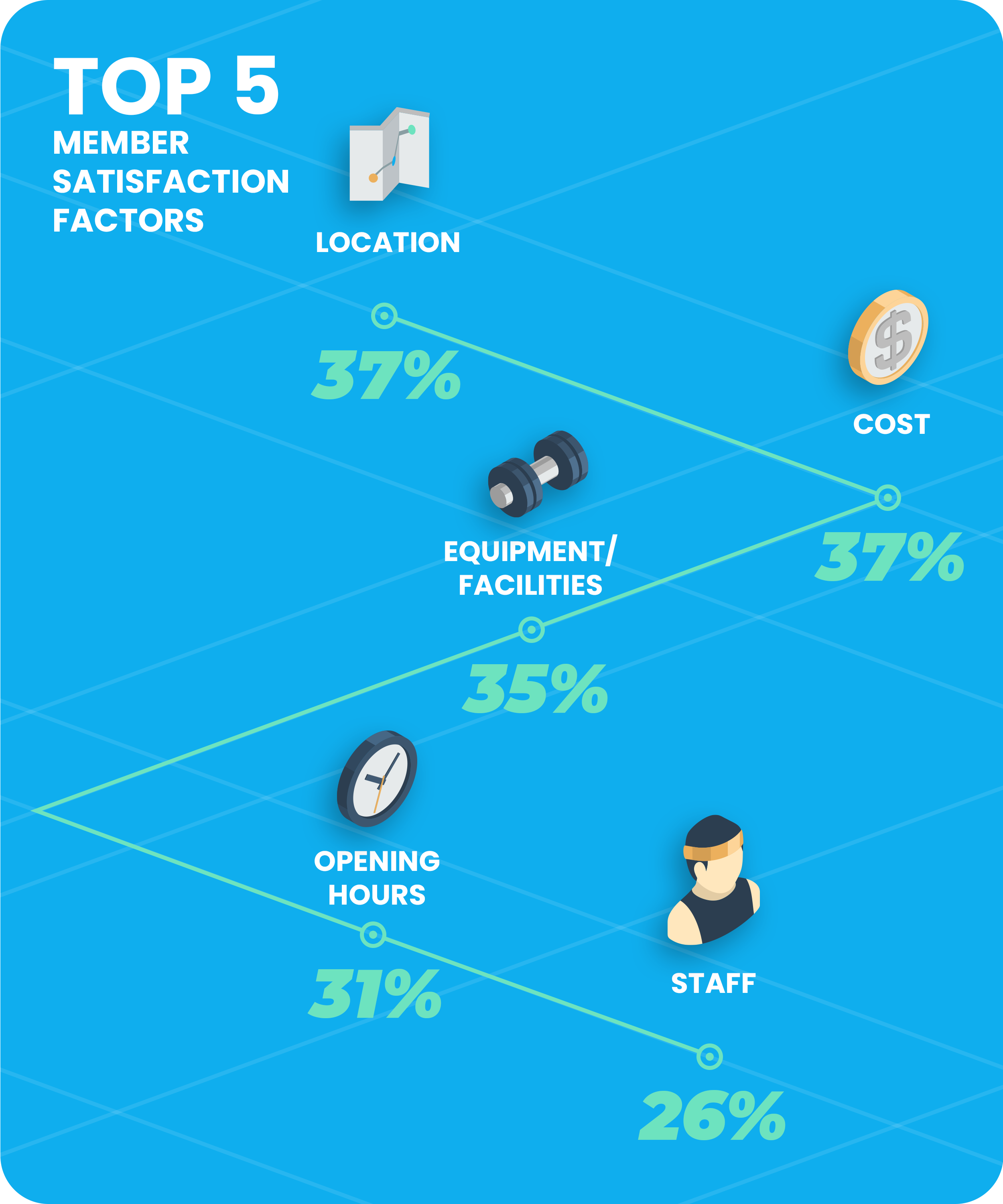
When and how gym-goers exercise: Trends and habits
2. 9 AM-noon
3. + 4. Noon-2 PM / 5 PM-8 PM
5. 2 PM-5 PM
6. 8 PM-11 PM
- Usage of equipment and services:
- Weights & Machines: 38% of gym members (source).
- Punching bags & martial arts: 30% of gym members (source).
- Personal trainers: 29% of gym members (source).
- Training/nutritional plans: 23% of gym members (source).
- Coached courses/teams: 21% of gym members (source).
- Online courses/workouts: 20% of gym members (source).
- Outdoor facilities: 14% of gym members (source).
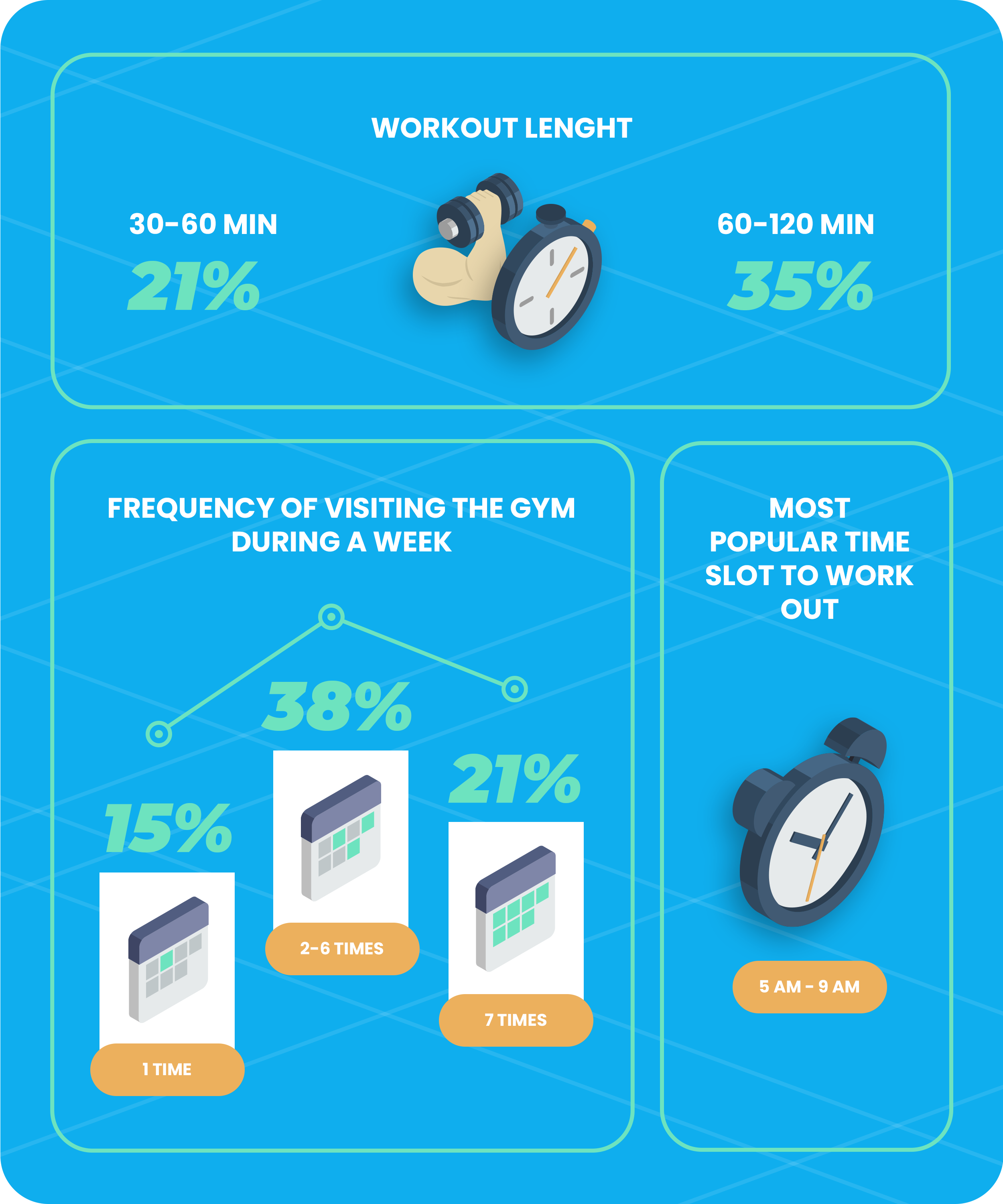
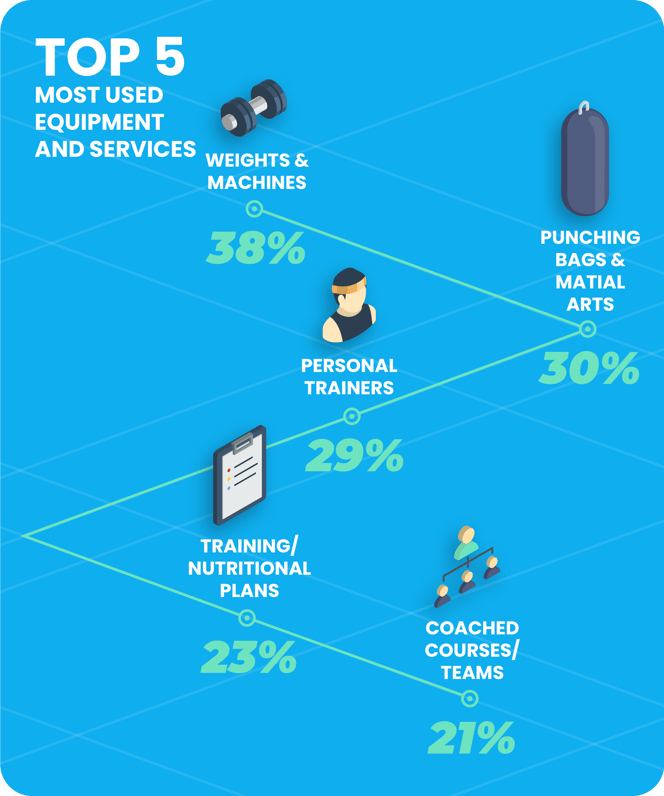
The future of fitness is digital: Stats for online, digital and virtual fitness
- The online and digital fitness industry is looking into an expected explosive growth with an estimated CAGR of 33.5% from 2020 to 2027 (source).
- Pre-pandemic, online fitness was worth a staggering $6 billion (source).
- Online fitness is projected to reach $59 billion by 2027 (source).
- In 2022, online exercise classes made it to the top 10 fitness trend list at #9 (source).
- Top 3 most popular virtual fitness classes (source):
- Yoga (32%)
- HIIT (15.6%)
- Pilates (8.3%)
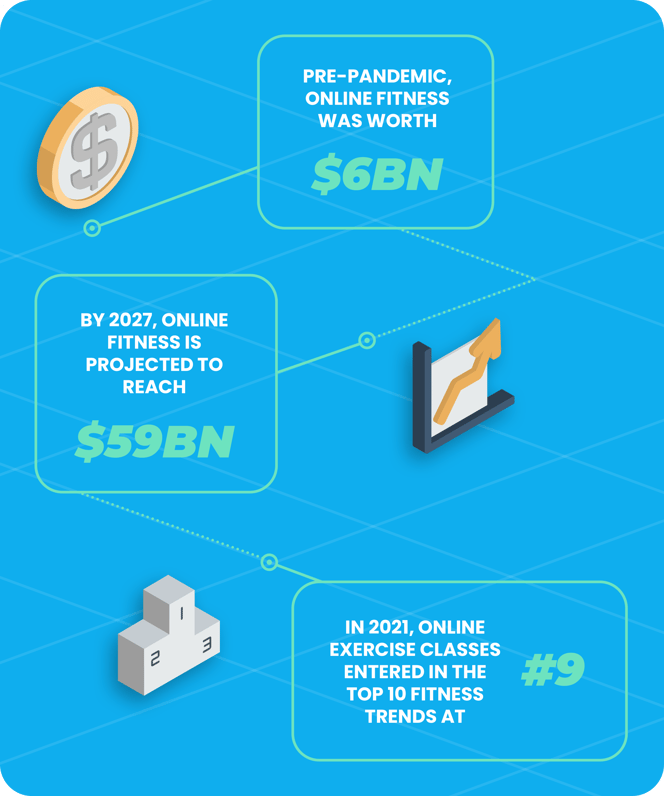
Maximising the benefits of fitness industry statistics for your business
The insights from these fitness industry statistics are a valuable resource that can help drive your business to success. By examining the trends, growth, and demand of various fitness activities and areas, you can make data-driven decisions that align with your business goals.
However, it all comes down to seeing these fitness industry statistics from the perspective of your business.
- Are you taking advantage of the growth opportunities in the fitness industry?
- Are there areas where you should adjust or redirect your focus?
- Do you have a clear understanding of your target audience and their preferences?
- Are you meeting the demands and needs of your members effectively?
By constantly reflecting on these key questions, you can gain a deeper understanding of which direction you should take your business in, and how to effectively reach your goals.
.png)


.png)